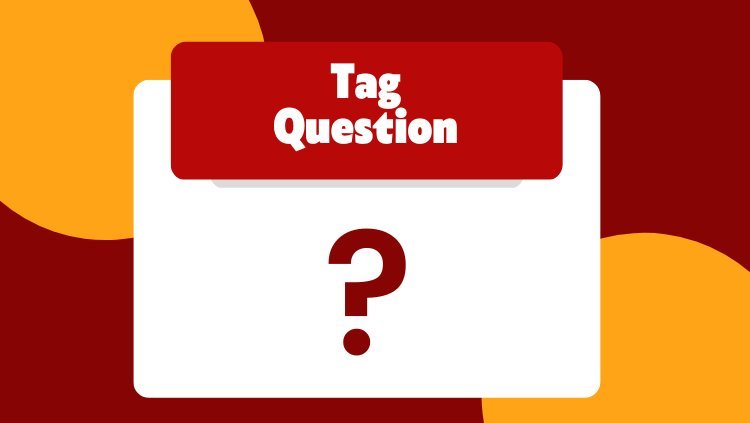SSC and HSC Teg Question 2015

Form auxiliary verb + subject We use the same auxiliary verb in the tag as in the main sentence. If there is no auxiliary verb, we use do. You live in Spain, don’t you? If the auxiliary verb in the sentence is affirmative, the tag is negative. You’re Spanish, aren’t you? If the auxiliary verb in the sentence is negative, the tag is affirmative. You’re not Spanish, are you? Meaning We use tag questions to confirm or check information or ask for agreement. You want to come with me, don’t you? You can swim, can’t you? You don’t know where the boss is, do you? This meal is horrible, isn’t it? That film was fantastic, wasn’t it? We use tag questions to check whether something is true. The meeting’s tomorrow at 9am, isn’t it? You won’t go without me, will you? Additional points In the present tense if the subject is I, the auxiliary changes to are or aren’t. I’m sitting next to you, aren’t I? With let’s, the tag question is shall we. Let’s go to the beach, shall we? With an imperative, the tag question is will you. Close the window, will you? We use an affirmative tag question after a sentence containing a negative word such as never, hardly, nobody. Nobody lives in this house, do they? You’ve never liked me, have you? When the subject is nothing, we use it in the tag question. Nothing bad happened, did it? When the subject is nobody, somebody, everybody, no one, someone or everyone, we use they in the tag. Nobody asked for me, did they? If the main verb in the sentence is have (not an auxiliary verb), it is more common to use do in the tag question. You have a Ferrari, don’t you? With used to, we use didn’t in the tag. You used to work here, didn’t you? We can use affirmative tag questions after affirmative sentences to express a reaction such as surprise or interest. You’re moving to Brazil, are you? Pronunciation If we don’t know the answer, it is a real question and we use a rising intonation with the tag question. You don’t know where the boss is, do you? If we know the answer and are just confirming the information we use a falling intonation with the tag question. That film was fantastic, wasn’t it? Ideas for teaching tag questions How do you teach tag questions? Add your idea » After I introduce the topic, we usually play bingo with tag endings. I give students cards like the bingo ones with different tag endings (for example …, did she? …, haven’t they?). Then I take a paper and read the sentence (e.g. She went to the supermarket). If they have a possible ending, they cross it out. The idea is to complete the card first. Students enjoy the game a lot! They have to pay attention to the tense and pronoun used. Cin I find that children need to understand the basic concepts of positive and negative statements as well as identify the subject and its pronoun form. So before I begin the lesson on question tags, I introduce and review these concepts with my children first. Once this is done, the majority of the children are able to grasp the question tag rules fairly easily and controlled practice follows the lesson presentation. Finally, I get the children to challenge each other by posing either positive or negative statements. Children respond by placing an appropriate question tag to the statement. This can be done in the form of a game where the children earn points if they are successful in completing the question tag. Oral practice also allows children to practise the rising intonation that is required in tag questions. Jamie Conduct a simple survey such as “Find someone who…” Instead of using regular questions, make tag questions for each item. Susan I provide my students with different cards with question tag answers then I start to read some sentences and the student who has the appropriate answer should stand up once he/she hears the sentence. This technique enables shy students to take part in the lesson. Rachid Hasnaoui, Tunisia I teach tag questions using Jenga. I write the sentences on the jenga pieces and students need to make the tags while building the jenga. The students are very competitive and they love to play Jenga, so it works for many structures. If you write the sentences in pencil, you can erase them and use jenga for other structures. Lynda Deckard Ramos Well I teach intermediate level students so I ask them to write sentences about themselves like personal information, likes, dislikes, last weekend activities, future plans, after they read the sentence, a partner should repeat the information with a tag for example: “You don’t like rock music, do you?” Elsa Sanchez 1 Give students 5 minutes to complete sentences about themselves (I live… I like… I don`t like… I want… My birthday is… I can… I can`t… etc. ) 2 Have students exchange their papers in pairs. 3 A student reads his partner’s sentence and makes a tag question about his partner. 4 The partner has to give the correct answer. 5 After a few minutes, switch partners. Kris we give a situation/description and have students make questions and its tag. Ex: You are with your friend by the window. It’s a beautiful sunny day. Make a sentence using a tag question about the day/weather… “It’s a beautiful day, isn’t it?” Kris Put some sentences and question tags on cards. Stick the sentences on the wall and distribute the cards with question tags among the students. Ask them to move around and put the tag on the appropriate sentence. Indusehgal This is an exercise to test students’ ability to come up with quick answers, and it´s very simple. The main pupose of it is that of speeding up students’ minds and enabling them to structure as fast as they can. As a teacher you must previously have a list of many sentences covering most of the structures and tenses. These sentences must be in affirmative and negative in random order. You will read out one of your sentences in the list and assign who of your students will come up with the proper tag. The appointed student has only one chance to answer. If she or he is wrong, you must pass as quick as possible to the next student with no explanations whatsoever looking for the right tag for your sentence. You won´t pass to the following tag until you get from any of your students the correct answer for the current tag. This exercise is fast and there are no explanations on why the answers they come up with are right or wrong. Students must realize themselves through their classmates´ answers why they were right or wrong with the answers they gave. They get a little stressed out throughout the dynamic, because when their turn comes, they panic trying to supply the right tag. This is good because they get their minds used to responding quickly and directly in english and getting rid of their over-thinking about structures in their native language. It is also and excellent way for them to learn how to manage their nervousness at the time of speaking. I hope it may work for you.











![Bangladesh Bank AD Question Solution [2016] । বাংলাদেশ ব্যাংক প্রশ্ন উত্তর](https://itenglishit.com/uploads/images/202209/image_380x226_63177df57df30.jpg)